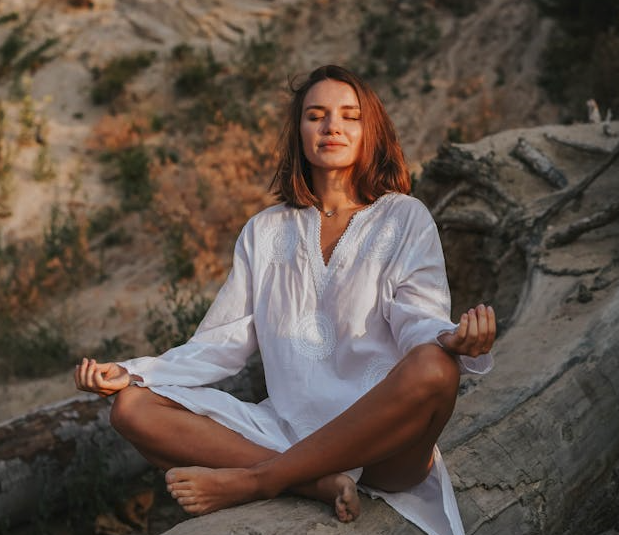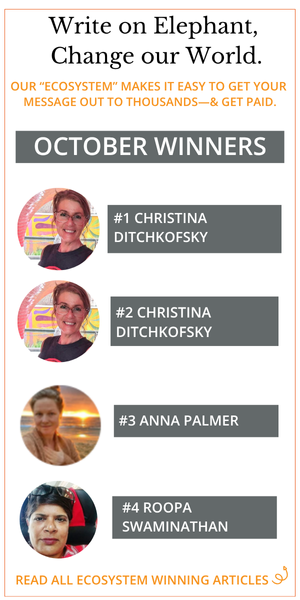“As soon as you trust yourself, you will know how to live.” ~Johann Wolfgang von Goethe
~
I recently read a thought-provoking book entitled The Yoga of Eating by Charles Eisenstein. Published in 2003, its subtitle is “Transcending Diets and Dogma to Nourish the Natural Self.”
I’ve gone through many different phases as an eater, from my carnivorous upbringing in Texas to a decade of yoga-inspired vegetarianism and even a couple months of eating a raw vegan diet.
Nowadays, I simply aim to eat as many whole, fresh, natural foods as possible and way less processed and packaged food. No sugar. Minimal carbs (bread, tortillas, pasta, rice, and potatoes). Our family currently eats chicken or red meat a few days per week.
But more than being about what to eat, this book discusses how to eat: “The yoga of eating itself is a kind of relaxation encompassing both physical and mental elements. Not manipulating, controlling, imposing upon, or dismissing the body’s messages, it trusts the body to move towards its natural rest state: beauty and wholeness. Everything you need to know about eating is already within you.”
We know that eating things as closely to the state they came in thanks to the elements of earth (soil), water, air, and fire (sunlight) is essential. Not foods that are canned, boxed, bagged, chopped, pasteurized, frozen, deep-fried, or powdered.
The ideal way to eat meals is in silence, doing nothing but eating the food—fully present to its taste, texture, temperature, and all its other details. No conversation, no looking at your phone or TV, no reading, nothing. Of course, this isn’t realistic to do all the time unless we’re living in a monastery, but I’ve found, for me, it is typically doable for at least one meal a day. This type of mindful eating enables us to really feel when our hunger has been satiated and to avoid overeating.
As Eisenstein writes, “The fundamental practice of the yoga of eating is to listen to your body-soul, trusting the tools of taste, smell, and intuition, not imposing any specific expectations, not expecting any specific results. The results will come of themselves.” Of course, dropping expectations in any and all realms of life is a helpful practice.
The sublime beauty of the yoga of eating is that it widens to encompass the yoga of doing everything. Drinking. Asana practice. Walking. Reading, Writing. Dancing. Listening. Driving. Waking up.
When we go slowly and pay attention to what we’re doing, time seems to expand. When we spend our time doing what we enjoy and feel passionate about, we enter into a state of creative flow.
Modern digital society is fast-paced and only getting faster. Our lives are easy to fill up with meetings, calls, appointments, and commitments. We become addicted to running from one thing to the next, never leaving ourselves the time and space to just breathe and be still. Eisenstein’s suggestion is to “simply decide not to be busy. Affirm to yourself—’I have enough time.'”
Though this feels oversimplified—seeing as it’s taken me long years to relinquish an obsessive attachment to my calendar and reclaim the (non)filling of my agenda in a healthy, balanced way—I do resonate with the idea that we choose how we spend our time and can thus choose not to be “crazy busy.” I am grateful that I have plenty of free, unstructured time most weeks to do as I choose, which often means practicing kundalini yoga, reading an intriguing book, doing pranayama and breathwork, writing in my journal, and watching documentaries or movies.
I sometimes still struggle with how busy to be. I get too busy or overextend myself, then I have to take time off to recuperate. Nonetheless, I honestly enjoy the variability of my days, weeks, and months. The pace is always changing and it keeps things interesting.
Another apt quote from the book: “To be not busy is to live according to the belief, ‘I have time to do what I want to do.’ Life still may be full but there is no feeling of compulsion. Life becomes a series of choices—‘What would I like to do now?’—rather than a series of obligations—‘What must I do now?’”
I’ve gratefully embodied this one in a deeper way over the past couple of years.
I used to wake up and start working first thing. Whatever editing assignment I had, I would work on that first, even if the deadline was days away. Other freelance writing work and paid projects took priority, as well. By the time I got done with my paid work, I rarely had any energy to invest in my own creative writing endeavors.
So I consciously set the intention to work on my own stuff first. It certainly didn’t happen overnight, but it did happen eventually, gradually, then almost completely, as change tends to do. Charles Eisenstein notes, “Even the most thorough change happens one choice at a time.”
As it turned out, prioritizing my own creative writing looked like choosing to start most mornings with deep, conscious breathing and yoga. For me, practicing the yoga of eating looks like intermittent fasting most days and eating as quietly, healthily, slowly, and mindfully as possible every time I sit down at the table.
Diving deeper into my yoga practice and delving into kundalini over the past few years has brought multiple health issues to light that I had no idea my body was harboring. This, in turn, has led me to the challenging yet ultimately positive path of addressing these issues through dietary changes and lifestyle.
My dis-ease led me to seek and find greater wholeness, harmony, and balance—even as I acknowledge that the path never ends and healing, just like eating, is a lifelong journey.
~


 Share on bsky
Share on bsky





Read 3 comments and reply